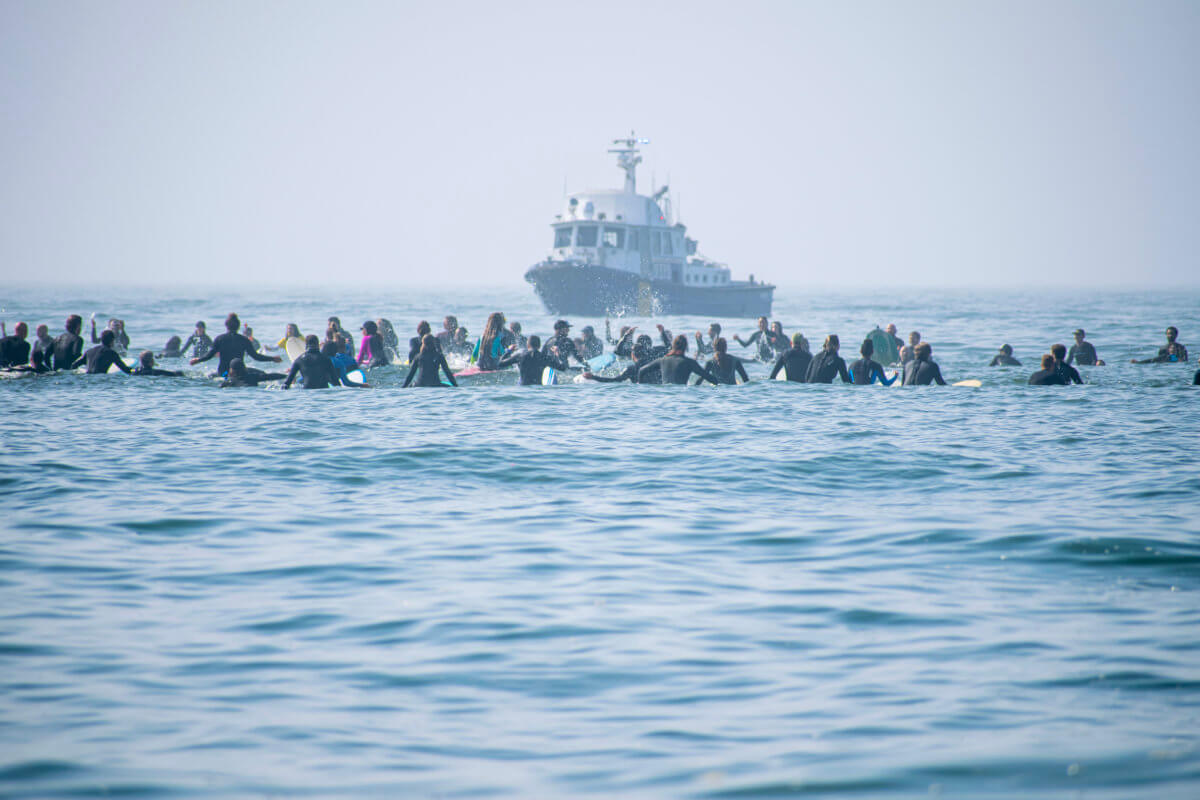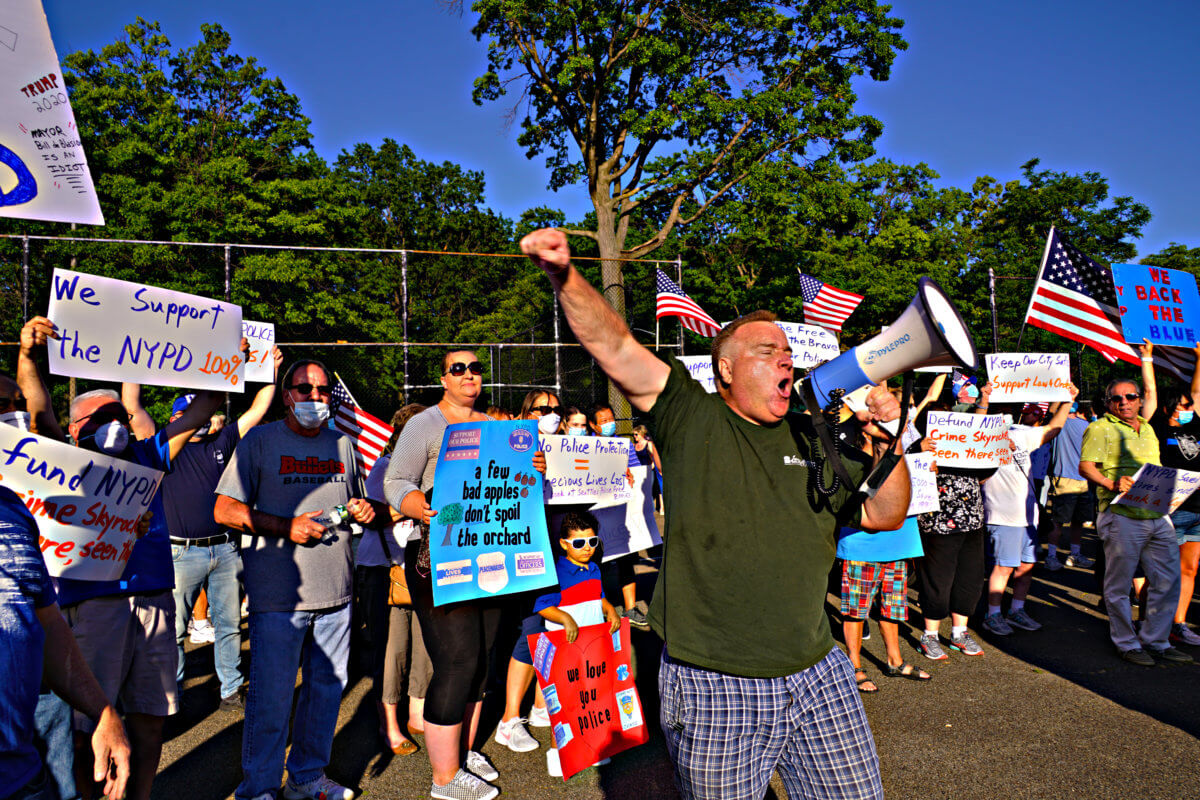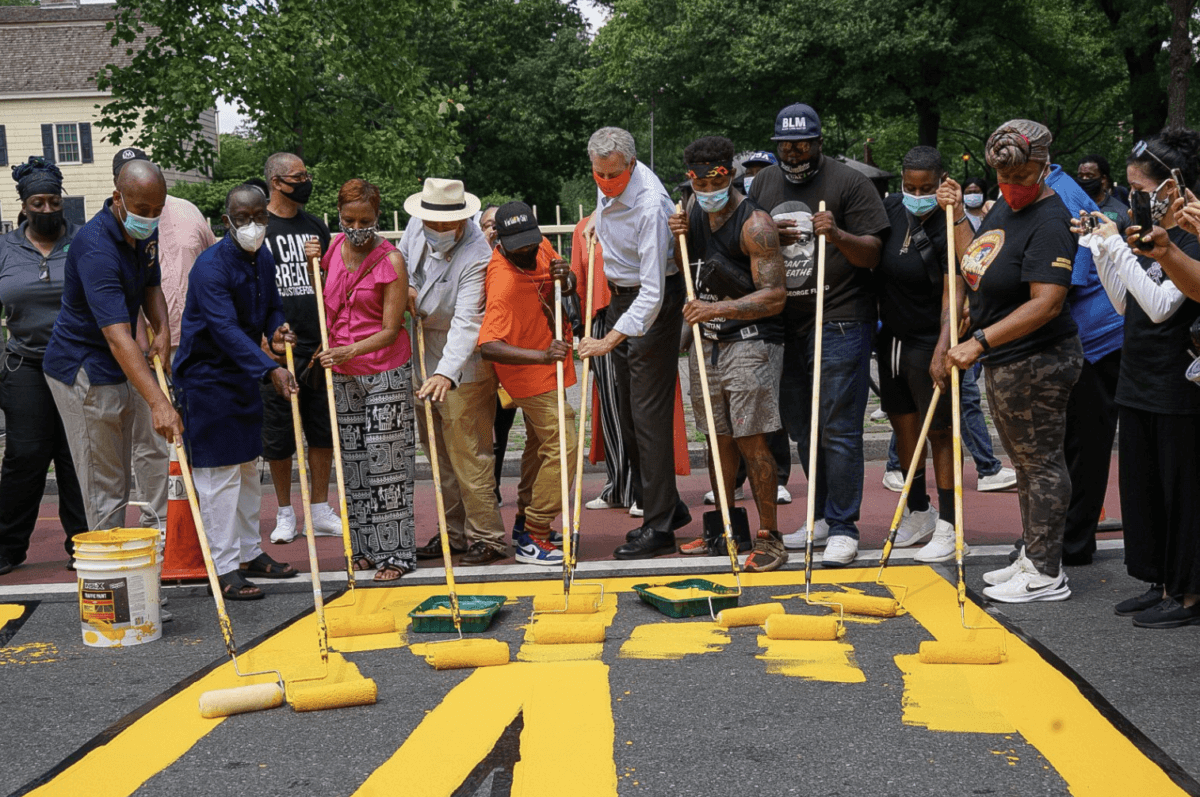Even during a global pandemic already disproportionately affecting Black, Brown and low-income communities, police brutality remained one of the reasons those same communities feared for their lives. As a result, people took to the streets to call for police accountability and systemic change.
The brutal police killing of George Floyd, a 46-year-old Minneapolis man accused of using a fake $20 bill who was, as a result of a 911 call, asphyxiated by a policeman kneeling on his neck for nearly nine minutes — which millions watched after a video recording by a passerby was shared on social media — is widely considered the impetus for the Black Lives Matter (BLM) protests that erupted nationally and globally.
But Floyd’s was far from the only story of Black people having deadly police encounters in the early months of 2020. Breonna Taylor, a 26-year-old essential worker in Kentucky, was asleep in her home before police executed a no-knock warrant and killed her in March, and Ahmaud Arbery, a 25-year-old man, was jogging before two white men shot him in a suburban Georgia neighborhood in February.
As a result of inaction from the police and judicial system, protests calling for an end to police brutality began to take place in New York City at the end of May — and with it, an aggressive police response including mass arrests, and a short-lived curfew instated by Mayor Bill de Blasio.
One of the first protests in Queens took place in Jackson Heights, where thousands of people united to march for police accountability. The demonstration culminated in front of the 115th Precinct, where community members and some elected officials also called for accountability from all government structures.

In another early protest, a captain took a knee with demonstrators in Jamaica. The moment was captured by Esther Lauren, a Queens nurse on the front lines of COVID, who offered to help fellow protesters, should they need it.
“I think people should be finding their role and knowing how to play it very well. I knew that I am a nurse, and my role is to be a nurse at all times,” Lauren told QNS.
For the rest of the summer, barely a day went by without a demonstration.
Demonstrations and vigils, most of them non-violent, occurred in many neighborhoods across Queens, from the Rockaways to Astoria. Many of these demonstrations were organized by mutual aid groups and individual community members who came together as a result of the unrest, such as the Queens Liberation Project.
In June, hundreds joined a paddle out in Rockaway Beach, organized by the Black Surfing Association in memory of Floyd and Taylor.

In another instance at Rockaway Beach, the Urban Youth Collaborative, a grassroots coalition of students fighting for transformative education reform, arranged a banner that read “Police Free Schools!” to fly over the beach.
In Ridgewood, two mothers organized the “Kids Peace Movement,” a day of socially distant talks and a march that gave kids space to express their own thoughts about the civil unrest.
“Statistics state that one in 1,000 young Black males have died at the hands of the police,” said Emmanuel Gray, a 9-year-old who gave a speech at the event. “This is scary to me because I’ve always looked up to the police as protectors and role models in our community. But as I’m getting older and older, it’s becoming more confusing to me when I hear the stories of Black males being harassed and killed … just because our skin color appears to be a threat.”

Hundreds marched toward the Christopher Columbus statue on Astoria Boulevard to demand its removal, denouncing it for being a “symbol of genocide,” with local elected supporting the idea.

Later in the summer, artists gathered for a more light-hearted yet emotional event outside of the Queens Museum to honor the lives of Taylor and Vanessa Guillén, a 20-year-old U.S. Army specialist based in Texas who, after public and national outcry, was found dead due to an attack from a male soldier.

“We will breathe. We will dance. We will continue to make art,” said Manuela Agudelo, founder of Kaleidospace and organizer of the event. “Black and Brown people aren’t gonna stop existing and we’re not gonna stop being joyful in the face of injustice and in the face of the people who keep trying to harm us.”
Even high school students participated in the racial reckoning. At Archbishop Molloy High School, current and former students called on the school administrators to address the BLM movement and make improvements to their own reported instances of racism. The school responded with the creation of a Council for Diversity and Inclusion.
The protests in Queens weren’t nearly as violent as those that took place in Manhattan and Brooklyn, with barely any reported instances of looting — an attempted looting at the Queens Mall was stopped by police and a false alarm in Corona caused local officials to regret their approach.
As weeks of protest went on, a wave of pro-police, or “Back the Blue” rallies, emerged in several neighborhoods, including in Middle Village, Woodside and Bayside.

“The police are necessary and part of being in a city that’s safe,” said a couple marching at a “Blue Lives Matter” rally in Woodside. “We feel the rhetoric and the message has been lost.”
While non-violent demonstrations prevailed in Queens, there were instances of police force and tense encounters between community members.
In Whitestone, protesters who hung signs in support of the BLM movement were met with racist and menacing attacks from a 54-year-old Flushing resident, who not only brandished a claw-like weapon, but also allegedly tried to mow down protesters. The man was later charged by Queens District Attorney Melinda Katz.
Right before a large pro-police rally at Bayside’s Crocheron Park began, rally attendees clashed with a small group of BLM demonstrators. The short, yet heated encounter resulted in one BLM demonstrator getting tackled by police and arrested while a woman with the BLM group got slapped across the face by an older white man wearing an NYPD shirt. Witnesses told QNS the unidentified man also spit at BLM protesters, but police didn’t make any attempts to detain him.

Attempts to get the 111th Precinct to respond to the woman’s complaints, however, went unanswered.
Following the New York Police Benevolent Association’s (PBA) endorsement of former President Donald Trump, Bayside’s BLM group staged a surprise protest outside the home of PBA President Pat Lynch. About four dozen demonstrators were met with barricades blocking Lynch’s home and other streets near it, with a heavy police presence following them from start to finish.

One of the last large-scale protests in Queens took place in Maspeth, where several dozen demonstrators marched through the mostly conservative neighborhood to protest police unions and QAnon. The protest ended after flags were taken from private homes and burned on the street — which many residents and local electeds objected to.

A resounding message of the monthslong protests was to defund the police.
In order to see concrete results, activists and elected officials called for at least a $1 billion cut from the NYPD’s budget, which has an overall budget of about $10 billion, as the city negotiated its budget for the 2021 fiscal year. Many felt those funds should be directed toward public services that directly help communities of color and are oftentimes underfunded or the first to be cut during a budget crisis, like the one the pandemic brought onto the city.
In anticipation of the final budget, the city and state passed some reforms: a ban on chokeholds and the repeal of 50-A, which stopped the public from uncovering an officer’s disciplinary record.
While de Blasio said he’d cut $1 billion from the NYPD’s budget, later comments from City Council members and reports noted that amount wasn’t actually cut. Most Queens Council members voted in favor of it, while the few who voted “no” cited the NYPD’s cuts as either too much or not enough.
“The people have demanded a real, $1 billion cut to the NYPD, but also a reimagining of public safety in this city,” said Long Island City Councilman Jimmy Van Bramer, who voted “no” on the budget. “Sadly, the most historic part of this budget is how it fails to meet the moment.”
Throughout the months of protests, de Blasio announced task forces to address the inequalities that persist in NYC and followed in Washington D.C.’s footsteps by painting a “Black Lives Matter” street mural in big, bold yellow across some city streets, including in Jamaica.

But the mayor appeared to have a hard time fully condemning the police’s forceful response that hundreds of protesters experienced and even more watched online from protest footage.
Attorney General Letitia James conducted an investigation of the summer’s protests, under the direction of Gov. Andrew Cuomo, which concluded that the NYPD needs more reform. A report by the New York City Department of Investigation, which de Blasio asked for, found the NYPD did use excessive force during the summer protests, affirming the accounts by many activists and protestors across the city. In a video statement, de Blasio agreed with the results.
A culmination of circumstances added to the historic civil unrest that took place in cities across the U.S. and the world, from a deadly virus to record unemployment rates — but it was the continuous killing of innocent Black individuals by those meant to protect the public that forced the country to once again face the systemic racism that makes up the fabric of its history and present day.
And while the protests slowly diminished in the winter months, the conversations continue to challenge policy makers, artists, educators and many more to effectively address inequality everywhere it exists.


































